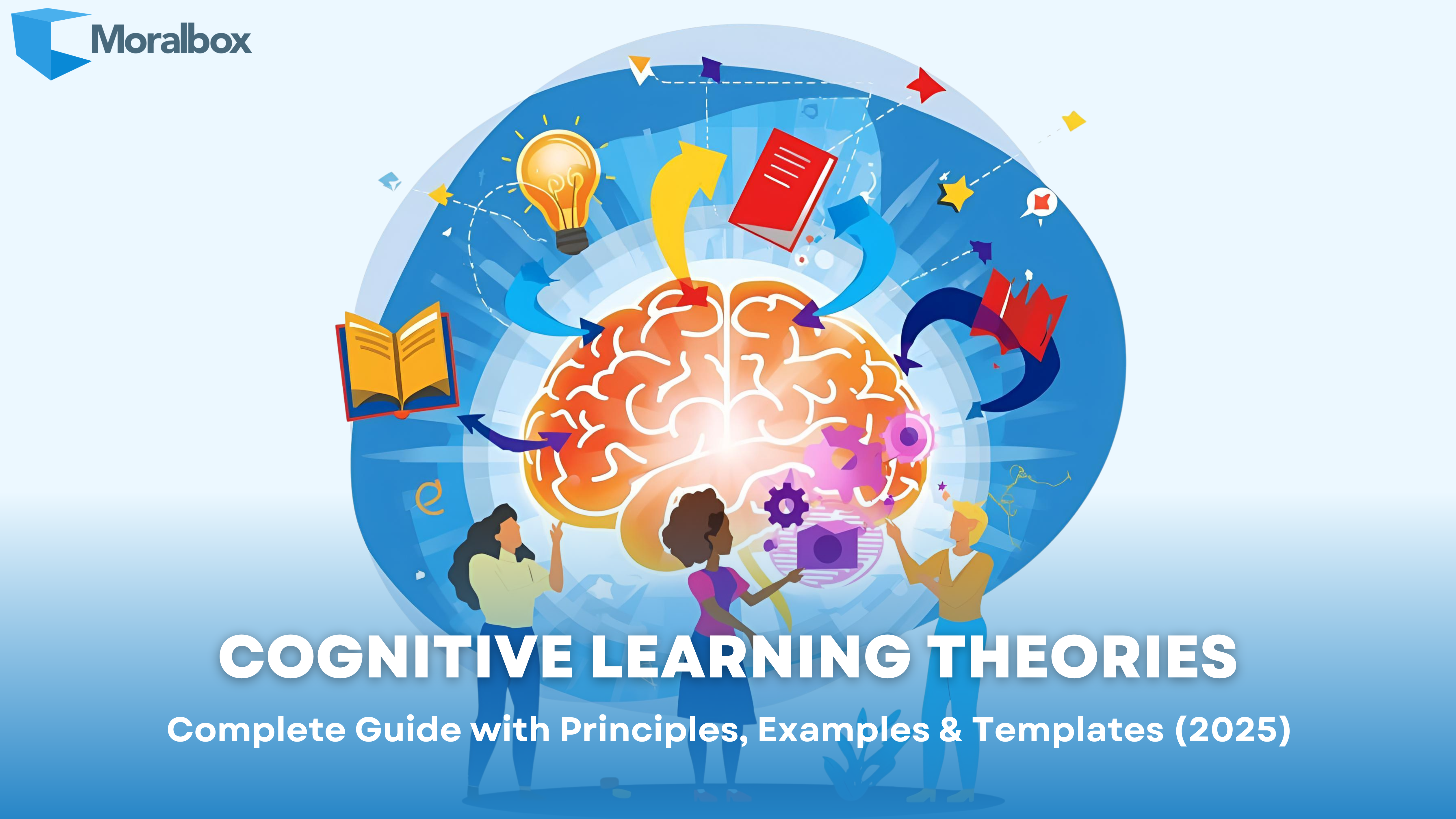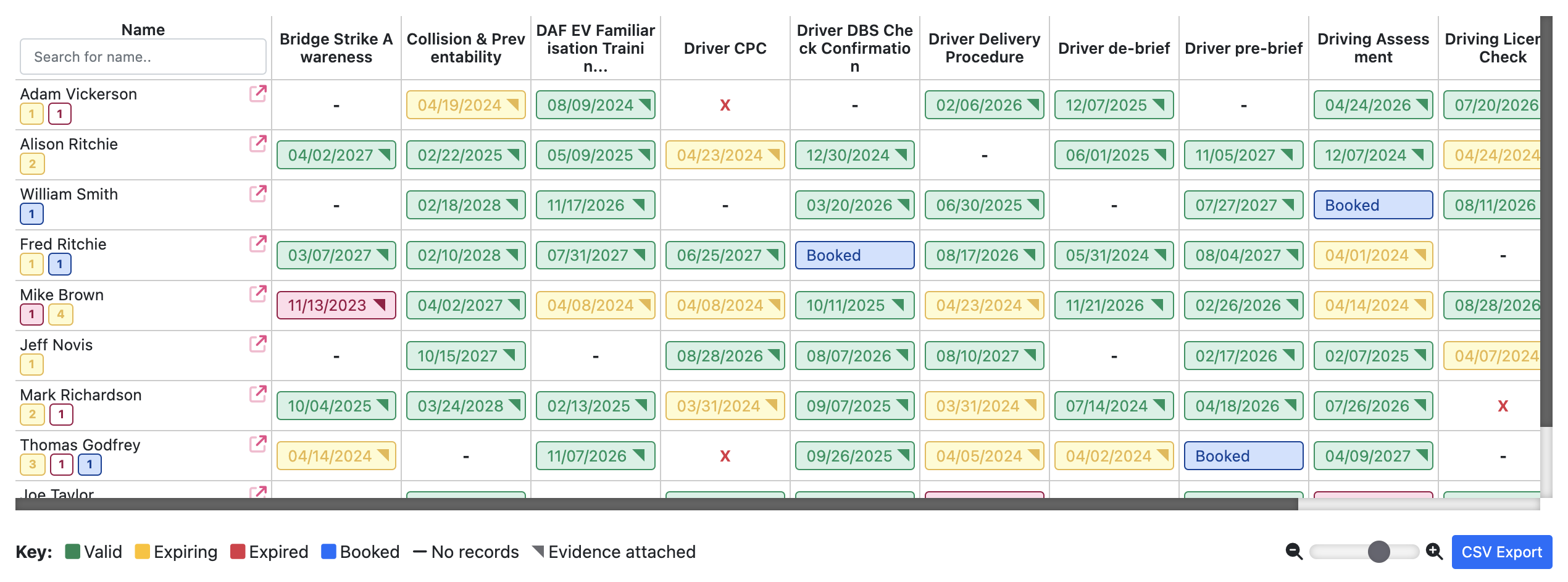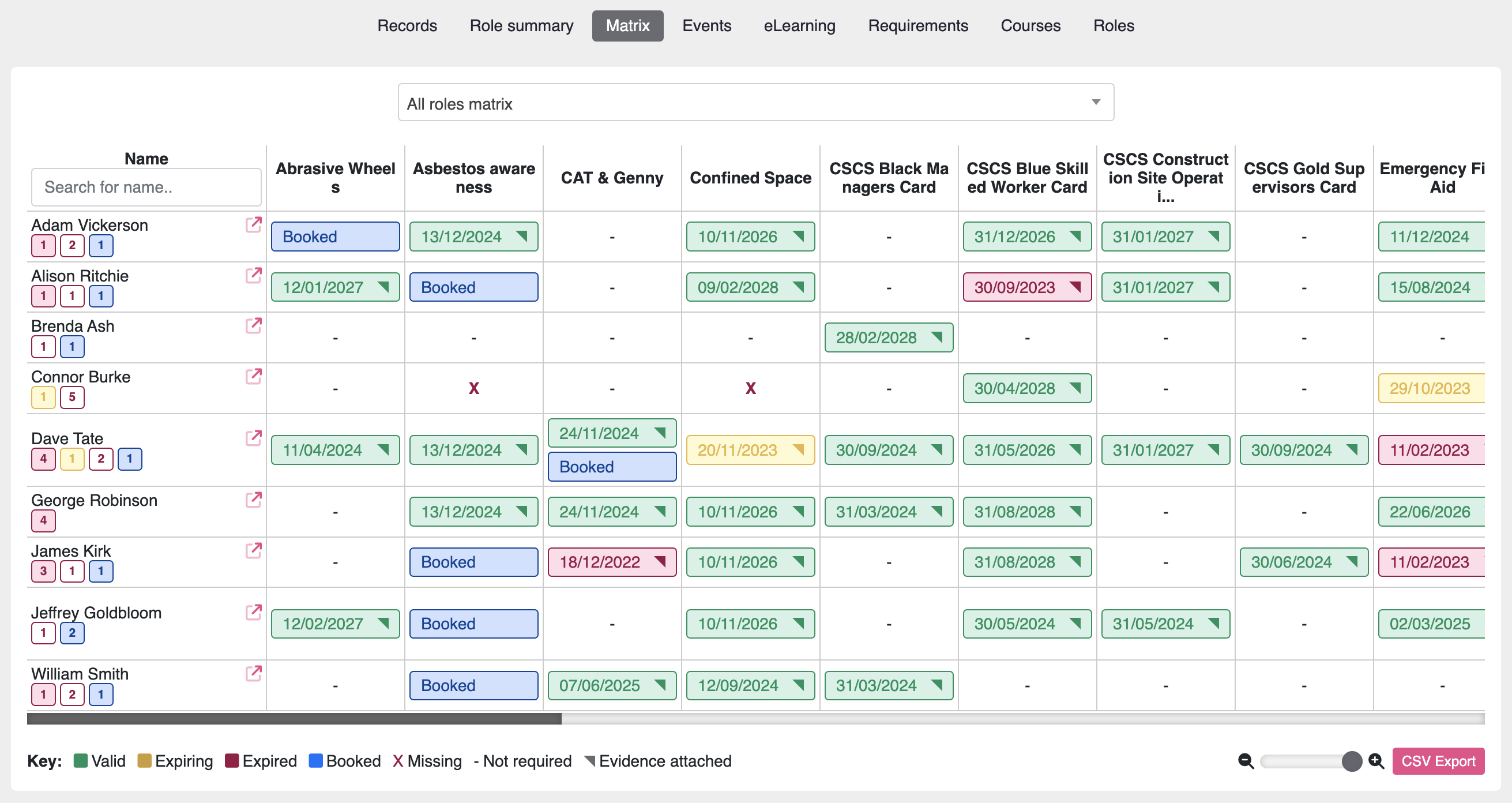Introduction
Imagine a classroom where the teacher doesn’t just recite facts but instead uses discussions, problem-solving, and real-world scenarios. Instead of memorising dates and definitions, you’re encouraged to understand how knowledge works, why you remember certain things, and what strategies help you learn better. This is the power of cognitive learning theories.
Unlike behaviourism, which focuses mainly on external actions, or constructivism, which centres on personal meaning-making, cognitive learning delves into how the brain processes, stores, and recalls information. In both education and workplace training, this shift matters more than ever.
Recent research confirms that approaches grounded in cognitive science, such as multimedia design, spaced practice, and active processing lead to better learning outcomes than passive or superficial techniques (Mayer, 2024; Ruiz-Martín, Blanco and Ferrero, 2024).
Table of Contents
What is Cognitive Learning Theory?
Cognitive learning theory explains how people acquire knowledge by focusing on internal processes such as thinking, memory, problem-solving, and attention. Rather than “what you do,” cognitive learning asks:
- How do you process new information?
- How do you connect it to prior knowledge?
- What strategies make learning stick?
One modern extension is the Cognitive Theory of Multimedia Learning (CTML), proposed by Richard Mayer, which frames learning through dual channels (visual and verbal), limited capacity, and active processing. In fact, Mayer’s recent review consolidates 15 evidence-based multimedia design principles grounded in cognitive science (Mayer, 2024).
👉 For a broader context, check our Schön’s Reflective Practice guide, which complements cognitive approaches by encouraging deeper reflection.
Core Principles of Cognitive Learning
Understanding the principles of cognitive learning makes it easier to apply them effectively in classrooms and workplaces.
- Active Learning: Learners aren’t passive; they process, interpret, and engage with material.
- Building on Prior Knowledge: New information connects best when linked to what learners already know.
- Attention and Focus: Learning starts with attention; distractions reduce knowledge retention.
- Memory Retention: Strategies like chunking, repetition, and mnemonics boost recall.
- Metacognition: Thinking about your thinking. In other words, it’s like reflecting on strategies, strengths, and weaknesses.
Recent evidence also supports these principles. For instance, a 2024 study of secondary school students showed that only research-backed techniques such as spaced practice and retrieval practice were strongly linked to better academic achievement, while many popular but less effective strategies had little impact (Ruiz-Martín, Blanco and Ferrero, 2024).
A 2024 empirical study of secondary school students showed that only research-supported techniques (e.g. spaced practice, retrieval practice) had significant positive correlations with academic achievement, while many commonly used strategies did not (Ruiz-Martín, Blanco and Ferrero, 2024).
As shown in Figure 1, these principles can be visualised as a simple cycle, illustrating how information flows from attention to application.
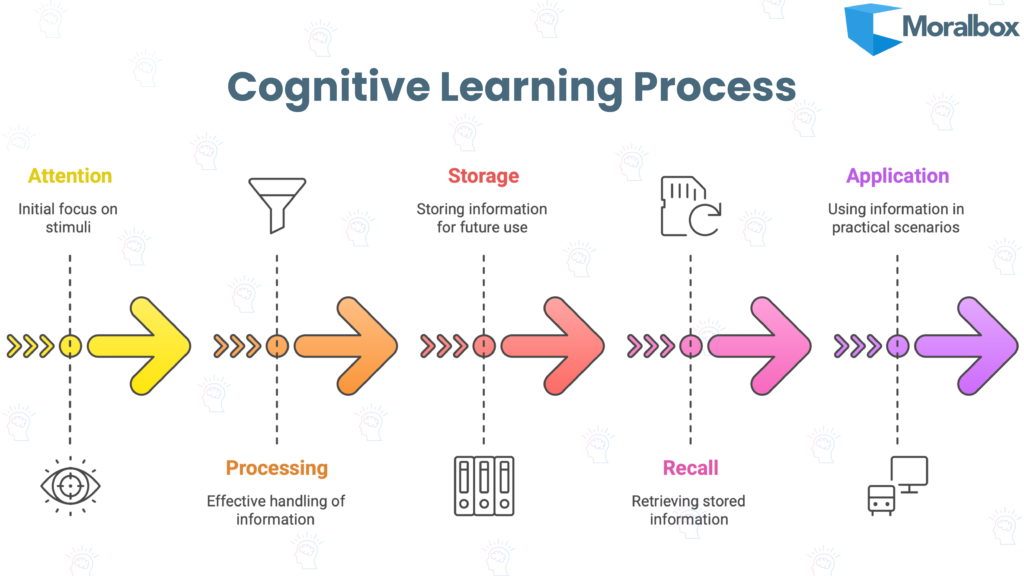
Figure 1: Core Principles of Cognitive Learning
Major Cognitive Learning Theories and Thinkers
Cognitive learning has evolved via contributions from psychologists and educational theorists over time. Thus, different models have shaped how we understand the process of learning. The most influential theories include the following:
1. Piaget’s Cognitive Development Stages
- To begin with, Piaget focused on how children progress through stages of thinking (Sensorimotor → Preoperational → Concrete Operational → Formal Operational).
- However, in practice, his work suggests that teachers should tailor instruction to developmental stages and avoid rushing abstract reasoning too early.
2. Vygotsky’s Social Constructivism
- In contrast to Piaget, Vygotsky emphasised that learning is social and collaborative.
- More specifically, he introduced the concept of the “Zone of Proximal Development (ZPD),” where learners can perform higher with guided support.
- Consequently, effective application includes peer learning, scaffolding, mentoring, and group projects.
3. Bloom’s Taxonomy
- Building on these foundations, Bloom presented a hierarchy of learning: Remember → Understand → Apply → Analyse → Evaluate → Create.
- Also, this model helps educators design assessments that go beyond rote recall.
- Therefore, teachers can encourage learners to think critically, evaluate information, and even create new ideas.
4. Bandura’s Social Cognitive Theory
- Finally, Bandura highlighted the importance of observation, imitation, modelling, and self-efficacy in learning.
- In other words, people learn not only from direct experience but also by watching others.
- As a result, trainers and teachers can apply this theory by using role models, peer demonstrations, and consistent feedback loops.
5. Richard Mayer’s Cognitive Theory of Multimedia Learning
- Here, teachers and trainers can design slides, videos, and e-learning content by combining visuals and narration effectively, avoiding unnecessary details, and eventually, encouraging learners to actively process information.
- Mayer explored how people learn through multimedia, emphasising dual channels (visual and verbal), limited working memory, and also by active processing.
- In particular, his model identifies practical design principles, such as coherence, signaling, and modality, that ultimately reduce overload and improve retention.
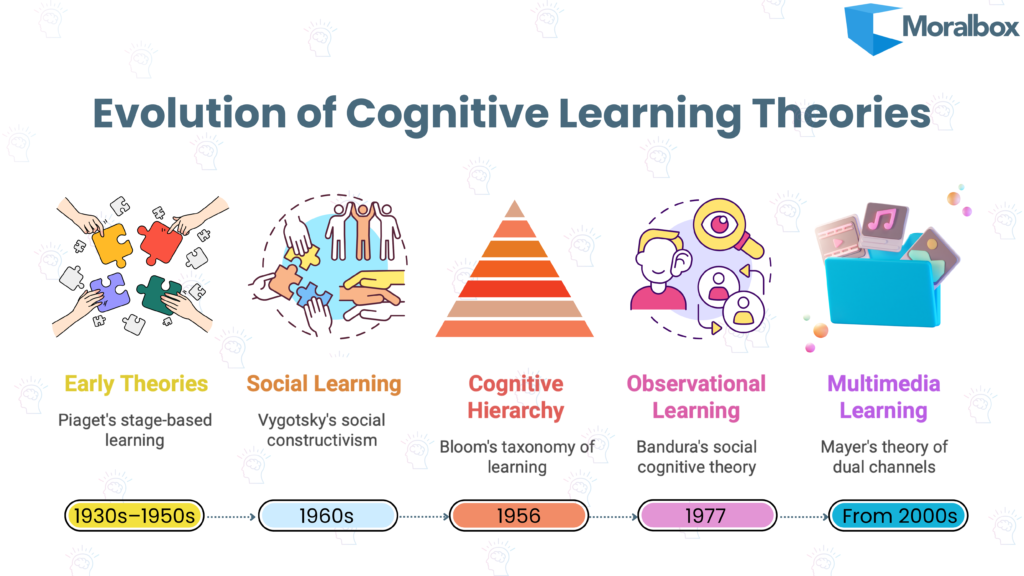
👉 Compare with our Honey & Mumford Learning Styles guide, which highlights individual learning preferences.
Applications of Cognitive Learning
In Education
- Teachers can design lessons layered from foundational to advanced ideas, using scaffolding and reflective prompts.
- Example: In a biology class, instead of just lecturing, students might explore a model, answer guided questions, and then map connections.
- Use scenario-based learning, reflection exercises, and feedback rather than rote slides.
- Example: For compliance training, simulate real-world dilemmas, encourage discussion, and then, facilitate peer review in the groups.
Thus, to make this practical, here is a downloadable Cognitive Lesson Plan Template that maps activities to cognitive principles and includes guided prompts.
Strengths and Weaknesses of the Cognitive Perspective
Like any approach, the cognitive perspective has both advantages and challenges. On the one hand, its strengths include the following:
Strengths
- Firstly, it encourages deep learning, reflection, and transfer of knowledge.
- Next, it applies across multiple domains such as academic, professional, and technical settings.
- Moreover, it supports learner autonomy and self-regulation, giving individuals more control over their own learning process.
Weaknesses
- To begin with, cognitive approaches are often more time-intensive than simple behaviourist drills.
- Also, some learners may feel lost without more direct instruction and structure.
- Finally, effective use requires skilled design to avoid cognitive overload, which can overwhelm learners.
Nevertheless, recent studies show promise in using AI-driven feedback loops to adaptively optimise cognitive load in real time, reducing overload and supporting diverse learners (Ma et al., 2024; Wong et al., 2025).
Comparison of Cognitive Learning Theories Approaches
To illustrate the differences between learning theories, see the comparison table below.
| Aspect | Cognitive Approach | Behaviourist Approach | Constructivist Approach |
|---|---|---|---|
| Focus | Internal mental processes (thinking, memory, problem-solving). | Observable behaviours shaped by external stimuli. | Learner’s active role in constructing meaning from experiences. |
| Key Theorists | Piaget, Vygotsky, Bandura, Bloom. | Pavlov, Skinner, Watson. | Vygotsky, Bruner, Dewey. |
| Learning Process | Information is processed, stored, recalled, and applied. | Behaviour is reinforced through rewards and punishments. | Knowledge is built through exploration, collaboration, and reflection. |
| Strengths | – Encourages deep understanding. – Improves critical thinking. – Promotes long-term retention. | – Clear, measurable outcomes. – Effective for habit formation and skill drills. – Easy to implement. | – Learner-centred. – Builds problem-solving skills. – Encourages creativity and adaptability. |
| Weaknesses | – More time-intensive. – Requires skilled instruction. – Risk of cognitive overload. | – Focuses only on observable behaviour. – Ignores internal thought processes. – Can lead to rote learning. | – Hard to measure outcomes. – Requires high learner motivation. – Can be inconsistent without guidance. |
| Best Applied In | Formal education, workplace training, critical thinking tasks. | Skill-based training, compliance, basic drills, behavioural conditioning. | Project-based learning, group work, experiential learning. |
Table 1: Comparison of Cognitive, Behaviourist, and Constructivist Approaches
👉 Tie to our Competency-Based Assessment guide, since both focus on applying knowledge to real skills.
FAQs
What are the 3 main cognitive learning theories?
To begin with, Piaget’s Developmental Theory explains stages of thinking. In addition, Vygotsky’s Social Constructivism focuses on collaboration and guidance. Finally, Bloom’s Taxonomy outlines a hierarchy of learning objectives. Moreover, Bandura’s Social Cognitive Theory is often added for its emphasis on observation and modelling.
Why is cognitive learning important in 2025?
Because both education and workplaces increasingly demand critical thinking, adaptability, and deeper conceptual understanding over rote memorisation. Also, modern tools like multimedia and adaptive AI now make it possible to design learning environments optimised via cognitive science.
How is cognitive learning used in workplace training?
In practice, it is applied through scenario-based tasks, peer-learning, feedback loops, reflection, and also by modelling. As a result, organisations move away from passive slide lectures towards active and engaging learning experiences.
Conclusion
Thus, cognitive learning theories go beyond memorisation and nurture learners who think, reflect, and adapt. Whether you teach in schools or train in corporate settings, applying these strategies leads to deeper engagement, more durable learning, and improved transfer.
📥 Don’t forget to download your FREE Cognitive Learning Templates to start applying these strategies today.
References
- Bandura, A. (1977) Social learning theory. Englewood Cliffs, NJ: Prentice Hall.
- Bloom, B.S. (ed.) (1956) Taxonomy of educational objectives: The classification of educational goals. Handbook I: Cognitive domain. New York: David McKay.
- Gkintoni, E., Antonopoulou, H., Sortwell, A. and Halkiopoulos, C. (2025) ‘Challenging Cognitive Load Theory: The role of educational neuroscience and artificial intelligence in redefining learning efficacy’, Brain Sciences, 15(2), 203. Available at: https://doi.org/10.3390/brainsci15020203 (Accessed: 29 September 2025).
- Mayer, R.E. (2001) Multimedia learning. Cambridge: Cambridge University Press.
- Mayer, R.E. (2024) ‘The past, present, and future of the cognitive theory of multimedia learning’, Educational Psychology Review, 36, Article 8. Available at: https://link.springer.com/article/10.1007/s10648-023-09842-1 (Accessed: 29 September 2025).
- Piaget, J. (1952) The origins of intelligence in children. New York: International Universities Press.
- Ruiz-Martín, H., Blanco, F. and Ferrero, M. (2024) ‘Which learning techniques supported by cognitive research do students use at secondary school? Prevalence and associations with students’ beliefs and achievement’, Cognitive Research: Principles and Implications, 9, Article 44. Available at: https://cognitiveresearchjournal.springeropen.com/articles/10.1186/s41235-024-00567-5 (Accessed: 29 September 2025).
- Twabu, K. (2025) ‘Enhancing the cognitive load theory and multimedia learning framework with AI insight’, Discover Education, 4, Article 160. Available at: https://link.springer.com/article/10.1007/s44217-025-00592-6 (Accessed: 29 September 2025).
- Vygotsky, L.S. (1978) Mind in society: The development of higher psychological processes. Cambridge, MA: Harvard University Press.

Ananya is a Marketing Executive at Moralbox, passionate about creating content that connects learning with business impact.
